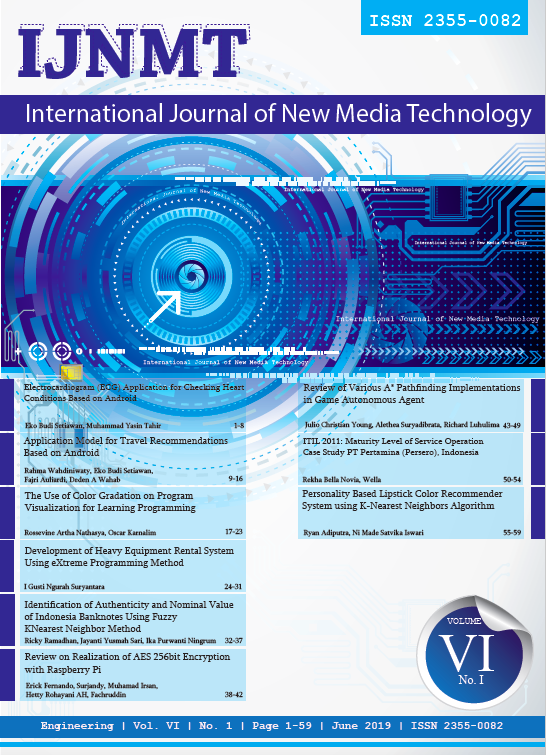Identification of Authenticity and Nominal Value of Indonesia Banknotes Using Fuzzy KNearest Neighbor Method
DOI:
https://doi.org/10.31937/ijnmt.v6i1.989Abstract
The existence of counterfeit money is often troubling the public. The solution given by the government to be careful of counterfeit money is by means of 3D (seen, touched and looked at). However, this step has not been perfectly able to distinguish real money and fake money. So there is a need for a system to help detect the authenticity of money. Therefore, in this study a system was designed that can detect the authenticity of rupiah and its nominal value. For data acquisition, this system uses detection boxes, ultraviolet lights and smartphone cameras. As for feature extraction, this system uses segmentation methods. The segmentation method based on the threshold value is used to obtain an invisible ink pattern which is a characteristic of real money along with the nominal value of the money. The feature is then used in the stage of detection of money authenticity using FKNN (Fuzzy K-Nearest Neighbor) method. From 24 test data, obtained an average accuracy of 96%. This shows that the system built can detect the authenticity and nominal value of the rupiah well.
Downloads
Downloads
Published
How to Cite
Issue
Section
License
Authors retain copyright and grant the journal right of first publication with the work simultaneously licensed under a Creative Commons Attribution-ShareAlike International License (CC-BY-SA 4.0) that allows others to share the work with an acknowledgement of the work's authorship and initial publication in this journal.
Authors are able to enter into separate, additional contractual arrangements for the non-exclusive distribution of the journal's published version of the work (e.g., post it to an institutional repository or publish it in a book), with an acknowledgement of its initial publication in this journal.
Copyright without Restrictions
The journal allows the author(s) to hold the copyright without restrictions and will retain publishing rights without restrictions.
The submitted papers are assumed to contain no proprietary material unprotected by patent or patent application; responsibility for technical content and for protection of proprietary material rests solely with the author(s) and their organizations and is not the responsibility of the IJNMT or its Editorial Staff. The main (first/corresponding) author is responsible for ensuring that the article has been seen and approved by all the other authors. It is the responsibility of the author to obtain all necessary copyright release permissions for the use of any copyrighted materials in the manuscript prior to the submission.















